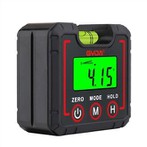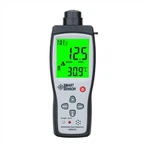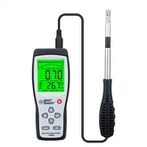The pH meter uses a two-point calibration procedure for calibration.
Although there are many kinds of pH meters, their calibration methods all adopt the two-point calibration method, that is, two standard buffer solutions are selected: one is quasi-buffer pH7 standard solution, and the other is pH9 standard buffer solution or pH4 standard buffer solution. First use the pH7 standard buffer solution to position the electrometer, and then select the first standard buffer solution according to the acidity and alkalinity of the solution to be tested. If the solution to be tested is acidic, use a pH4 standard buffer; if the solution to be tested is alkaline, use a pH9 standard buffer. If it is a manually adjusted pH meter, it should be operated several times between the two standard buffer solutions until it is no longer necessary to adjust its zero point and positioning (slope) knobs, and the pH meter can accurately display the pH values of the two standard buffer solutions. Then the calibration process ends. Thereafter, the zero and positioning knobs should not be moved during the measurement. If it is an intelligent pH meter, it does not need to be adjusted repeatedly, because the pH value of several standard buffer solutions has been stored inside it to choose from, and it can be automatically recognized and calibrated automatically. But pay attention to the selection of standard buffer and the accuracy of its preparation. Smart 0.01 grade pH meters generally have three to five standard buffers in memory.
Secondly, special attention should be paid to the temperature of the solution to be tested before calibration. In order to correctly select the standard buffer, and adjust the temperature compensation knob on the electrometer panel to make it consistent with the temperature of the solution to be measured. The pH value of the standard buffer solution is different at different temperatures.
Although there are many kinds of pH meters, their calibration methods all adopt the two-point calibration method, that is, two standard buffer solutions are selected: one is quasi-buffer pH7 standard solution, and the second is pH9 standard buffer solution or pH4 standard buffer solution. First use the pH7 standard buffer solution to position the electrometer, and then select a standard buffer solution according to the acidity and alkalinity of the solution to be tested. If the solution to be tested is acidic, use a pH4 standard buffer; if the solution to be tested is alkaline, use a pH9 standard buffer. If it is a manually adjusted pH meter, it should be operated several times between the two standard buffer solutions until it is no longer necessary to adjust its zero point and positioning (slope) knobs, and the pH meter can accurately display the pH values of the two standard buffer solutions. Then the calibration process ends. Thereafter, the zero and positioning knobs should not be moved during the measurement. If it is an intelligent pH meter, it does not need to be adjusted repeatedly, because the pH value of several standard buffer solutions has been stored inside it to choose from, and it can be automatically recognized and calibrated automatically. But pay attention to the selection of standard buffer and the accuracy of its preparation. Smart 0.01 grade pH meters generally have three to five standard buffers in memory.
Secondly, special attention should be paid to the temperature of the solution to be tested before calibration. In order to correctly select the standard buffer, and adjust the temperature compensation knob on the electrometer panel to make it consistent with the temperature of the solution to be measured. The pH value of the standard buffer solution is different at different temperatures.







